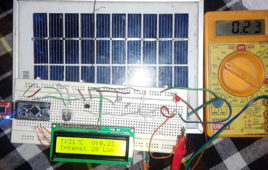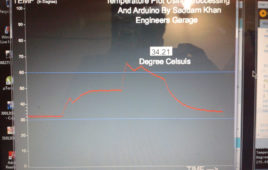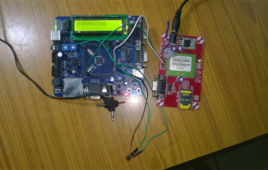There are Power Stations for Maintaining or Monitoring the Power Circuits or Parameters related to Solar Panel. Parameters like Voltage, Temperature, Light Intensity and Current, which are important to monitor. The Monitoring of these parameters are also important in Households too. So, here we discuss about, How to Monitor Solar Panel Parameters.Working of this circuit is very common. In this circuit all the parameters are in the form of an Analog Form or nature. We have to only convert them in Digital Form or Nature and display these Digital values on the LCD. Some additional circuits are also required for proper Measurement.
Temperature Plot Using Processing and Arduino
The plotting of Data on a graph is used to observe, and subsequently describe, visible patterns that exist within the data. The main aim of this project is to show, how to plot a variable graph using processing environment and Arduino. In this article temperature is plotted on the processing graph. Processing environment is quite similar to Arduino but difference is in processing environment. We can plot the graph but in Arduino we can’t plot any type on graph. Processing Environment is very useful in cases of plotting Analog graphs.Here we are going to discuss plotting temperature graph on computer or laptop using Processing Environment and Arduino. Circuit of reading temperature is very simple.
Overheating Alert For Remote Area Using GSM
This project is about monitoring the temperature of some remote area. If there is some area which is difficult to reach and that part is at critical stage. The temperature needs to be below a level but it is not possible to monitor the temperature of that area regularly.Then at this point we can use this model which is so intelligent that it keeps monitoring the temperature of that area and whenever temperature increases beyond a threshold then at that point it sounds the alarm and send the message to the number which is already stored in the microcontroller.
RF based Fire Alarm (Overheat Alarm)
This project presents another application of RF (radio frequency) communication. The capability of fire alarm circuit can be improved by incorporating an RF [[wysiwyg_imageupload::]]module. This way the temperature sensor and buzzer for alarm can be placed away from each other. This provides flexibility in installing various sensors at different locations in a building and thus overheating at a place (due to fire) would signal the buzzer to go on. This project about fire alarm circuit can be divided into four parts, namely, temperature sensor, comparator, transceiver part (RF module) and the output. In this circuit a temperature sensor (LM35) is placed at a certain place and its output is given to the negative end of a comparator. LM324 has been provided in the circuit for comparator. The positive end of comparator is connected to a preset, to set the reference temperature. As long as the output of temperature sensor is below the set reference, the output of comparator stays high.
Fire alarm using temp sensor (LM35), opam (LM339) & 555 timer IC
At times we forget to switch off our heating devices and eventually they get damaged. Therefore there is always a need of a device which can alert by sounding [[wysiwyg_imageupload::]]an alarm if the device temperature goes beyond a particular value. Same concept can be used in this project about fire alarm. If a building catches fire then it will raise an alarm and people could evacuate the building. This circuit uses a LM35 temperature sensor along with a LM339 comparator. Interfaced to LM339 are the following components: Resistors, Capacitors, Transistors, 555 Timer, Buzzer (output). This project about fire alarm circuit is based around LM35 which is a temperature sensor and could be used to switch an alarm when temperature goes beyond a preset value. In this circuit the output of LM35 is fed to the negative pin of comparator of LM339. The positive input is connected to a preset VR1 of value 10K.
Full range centigrade temperature sensor using LM35
LM35 is a temperature sensor. Normally it can give readings from 2 degree centigrade to 150 degree centigrade but in this project, connecting a resistor to Vout through a negative voltage –Vs of value (Vs /50micro ampere) increases its range from -55 degree centigrade to +155 degree centigrade. For every degree rise in temperature…



